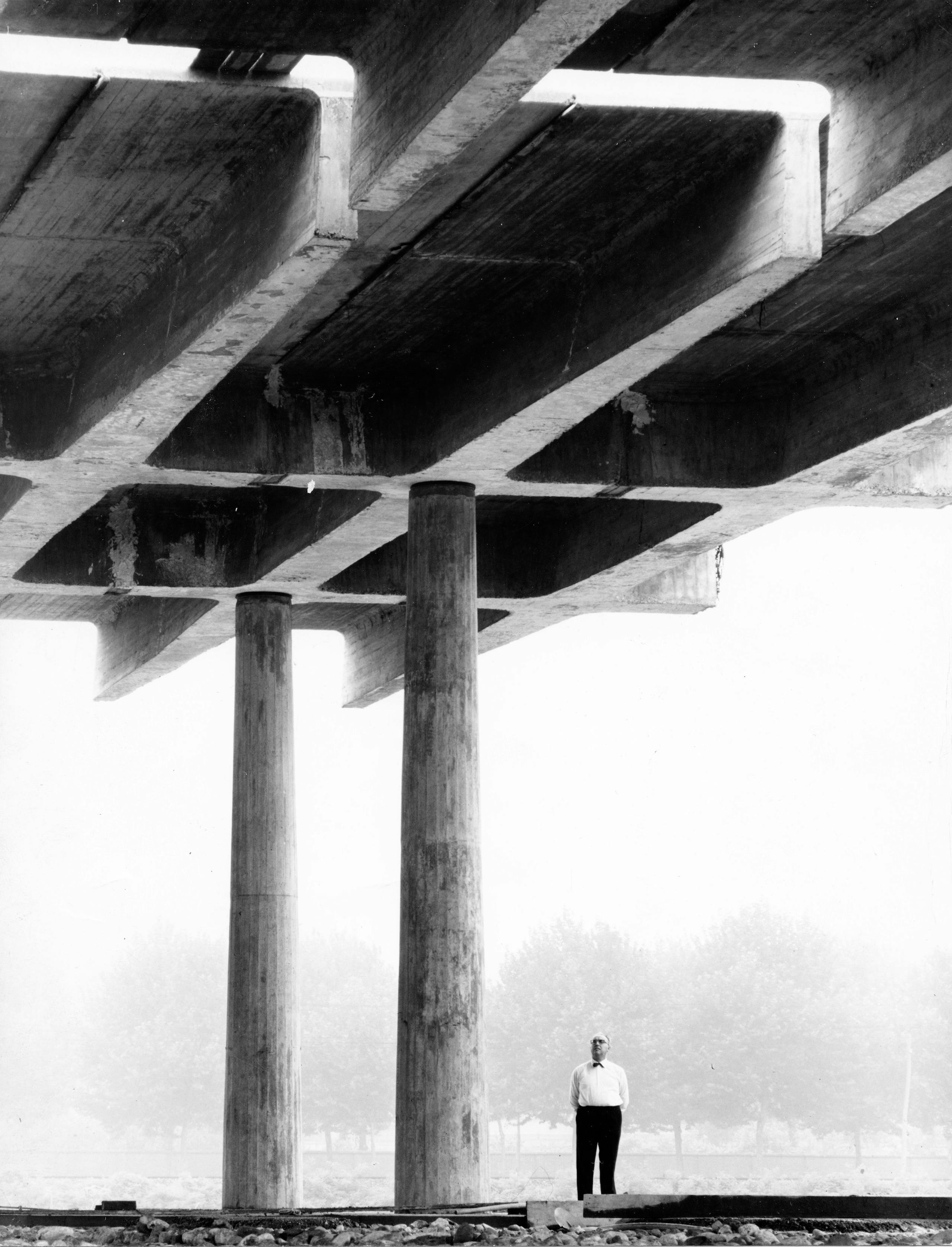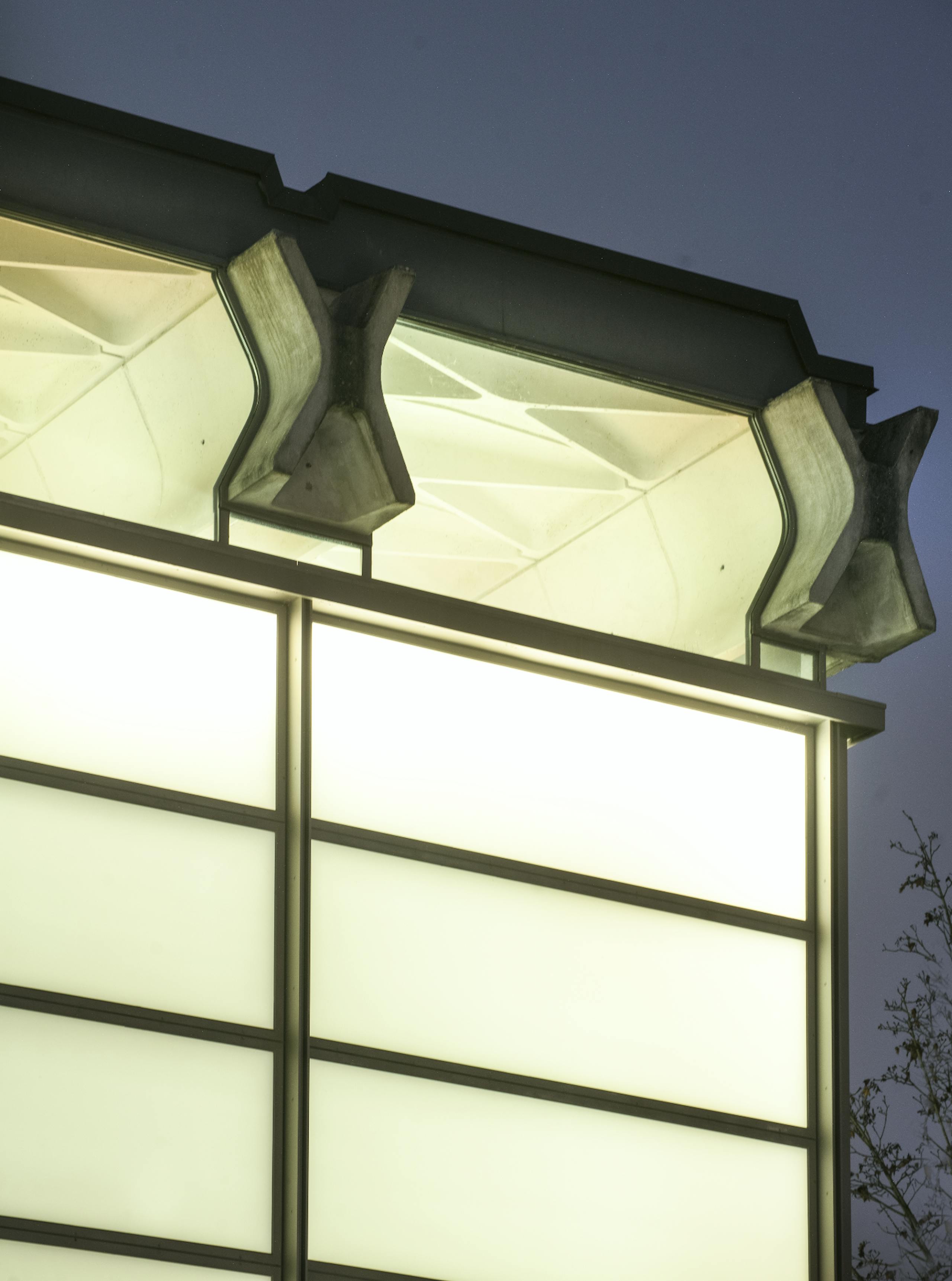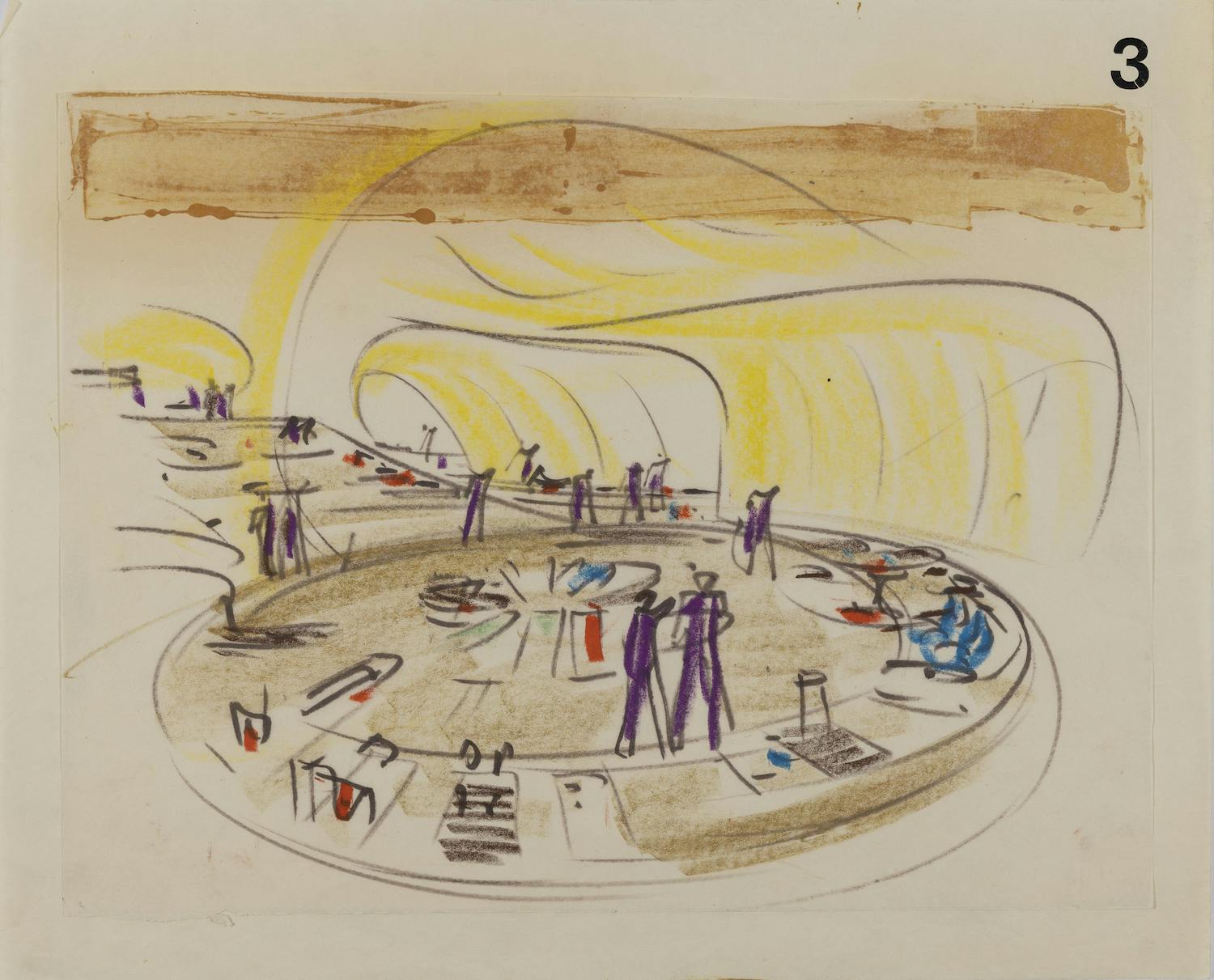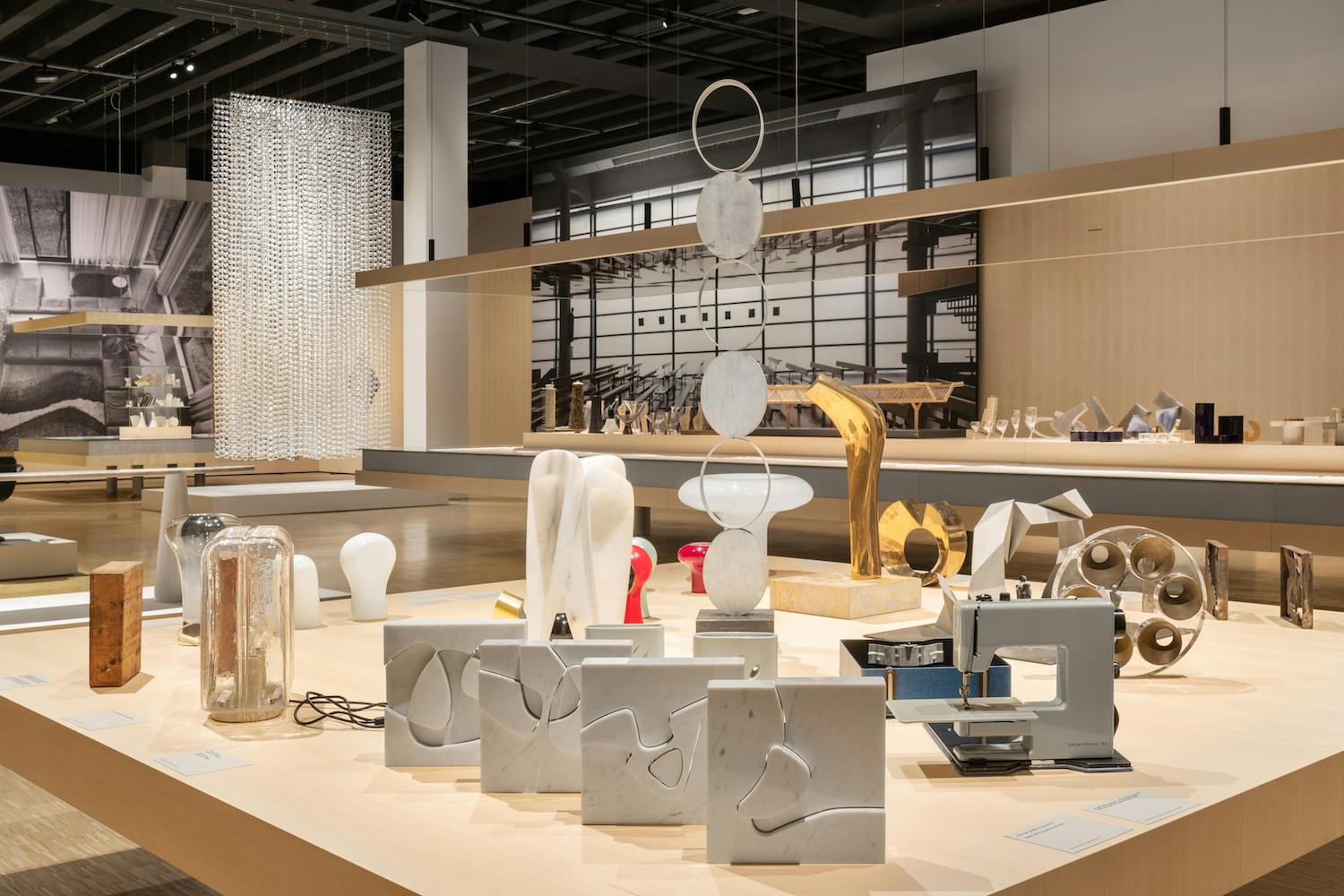

Angelo Mangiarotti, Baranzate church, photo by Filippo Romano
An interview with Renzo Piano by Fulvio Irace, on the occasion of the exhibition Angelo Mangiarotti. When Structures Take Shape, organized in collaboration with the Angelo Mangiarotti Foundation and featuring Renzo Piano, which can be visited Triennale until April 23, 2023.

Installation view of the exhibition Angelo Mangiarotti. When Structures Take Shape, Triennale Milano, 2023, photo by Gianluca Di Ioia
Fulvio Irace: Albini, Zanuso, and Mangiarotti mark three stages of your early formation. Three lecturers at the Politecnico di Milano, where you graduated on March 6, 1964. Three important figures during crucial years for our country’s history. Can you tell us a little bit more about the role that they each played in your personal history?
Renzo Piano: As I have always said, Franco Albini is where everything began and he is one of the reasons why I left Florence for Milan. For me, Albini represented an idea of architecture as salvation and the vision of the architect as a poet of doing, inspired by a deep social concern. I was around twenty-three and Milan was my school of life, thanks to the fertile terrain created by figures like Albini, Zanuso, and Ciribini (my unforgettable thesis supervisor who introduced me to the world of prefabrication and industrial production in architecture), but also thanks to the atmosphere of a city that was the embodiment of work, of social modernity, of participation, and of the recognition of workers’ rights.
I spent my mornings learning about modular planning on campus and my afternoons working in Albini’s studio. His studio on Via XX Settembre was my training ground where I learned to practice patience. I can vividly remember various episodes that still seem significant to me today. One day I accompanied the maestro to the Brionvega firm in Lambrate to collect an Orion television. When we got back to his office, Albini told me to take it apart, which I did, placing every single component on the table. I created an almost entomological order, which I believe Albini appreciated, considering it to be a lesson on method. Then he asked me to put it all back together again. An exercise in comprehension and patience, which has remained with me for the rest of my life.
I also remember our trips to Genoa to meet Caterina Marcenaro and then our return via the Poggi brothers in Pavia. Our long silent sessions seated on the Luisa chair, while he stroked the armrests to feel the edges, and then the fifty thousand granite blocks for the exterior of La Rinascente that had to be designed one by one. A job that might seem repetitive but which I found exhilarating because it taught me that every material conceals within itself a plausible form, almost a promise.

Marco Zanuso, Antropus, 1949, Arflex (1978), Cassina (2015), foto Amendolagine Barracchia, permanent collection Triennale Milano
You met Zanuso immediately afterward, in a different stage of your life, when you were no longer a student, but at the outset of your professional career. What did Marco Zanuso teach you?
I was Zanuso’s assistant for about two years, from 1965 to 1967, for his course on the Morphological Character of Materials. An abstruse title that actually concealed an exciting reality regarding the investigation and study of the nature of materials. It was the confirmation of Albini’s method: materials contain their destined form! For me working on materials, getting to know their structure, their resistance, their qualities, meant tackling the physical part of the design. I didn’t grow up with the idea that architecture is an art. On the contrary, architecture is shaped by necessity. Albini and Zanuso were both very aware that architecture has a structure as well as semantics.
I didn’t grow up with the idea that architecture is an art. On the contrary, architecture is shaped by necessity.
Angelo Mangiarotti represented a significant episode in your prehistory, so to speak. I’m referring, in particular, to your encounter/clash on the design for the furniture pavilion that was supposed to be built in the Triennale park for the 15th edition. But first things first: what memories do you have of Mangiarotti?

Angelo Mangiarotti, Study of interior space at the pavilion for the 14th Triennale, 1968. Courtesy Archivio Fondazione Angelo Mangiarotti
I met him later, in 1967, when I was carrying out my first experiments into shell structures: it was basically the continuation of the approach borrowed from Albini and Zanuso. To overcome the blank page syndrome, I felt I needed to let myself be helped by the reality of the materials and, above all, by the laws of the forces of gravity. An unavoidable physical fact that was the exact opposite of a process beginning with a preconceived idea of form. For me the force of gravity is still the first constitutive action in the realization of a project. If you take an elastic fabric and pour a plaster-like liquid into it, then it will take the form corresponding to the tension diagram. When you tip it out, you will find yourself with a form that represents points of equal compression. At that time, I was very interested in Frei Otto’s experiments with hyperbolic paraboloids and soap bubbles in tension: the context in which you move and the things that attract you are vital because a design does not take place in a void, in the solitude of study. On the contrary, it is nourished by gaze and maybe also by “theft.”

Installation view of the exhibition Angelo Mangiarotti. When Structures Take Shape, Triennale Milano, 2023, photo by Gianluca Di Ioia
This process was already known to and practiced by Gaudì, wasn’t it? In the structure of the Sagrada Familia.
That’s right. The catenary—of which Gaud. had a model that you can still see today—is a tension diagram: each link is identical in size and weight, and the curve is determined by the force of gravity in each specific point.
Was this also the case of the Triennale pavilion?
Yes. The question arose when the Board of Directors of the executive council (including Zanuso, Vigan., De Carlo, and Rosselli) decided I should work with Mangiarotti who had already submitted a model (which turned out to be expensive in the end as well as not fulfilling all the set-up requirements). Mangiarotti was a very kind man and often invited me to lunch. I was a great admirer of his Baranzate church, a real masterpiece expressing the tectonics of architecture to the maximum, the expressive power of beams modeled with real engineering skills that could ultimately be interpreted as sculptures. His proposal for the pavilion stemmed from an impulse that was the opposite of my solution: more architectural in a certain sense, focused on the configuration of the internal spaces and therefore more restrictive in terms of the display systems that would be required, which clashed with the requirements expressed by the Council. In my case, the organic forms were intrinsic to a process that I had explored step by step, while in his, they were possibly closer to the expressiveness of a gesture that came from his customary method. A method that I now recognize to be very much my own: it’s the method of composing “piece by piece,” architecture as assembly, the importance of the joint. Now, all these years later, what we have in common is more important than what divided us on that single occasion.
Credits
Interview excerpted from the exhibition catalog Angelo Mangiarotti. When Structures Take Shape (Electa, 2022), curated by Fulvio Irace.
Related events
